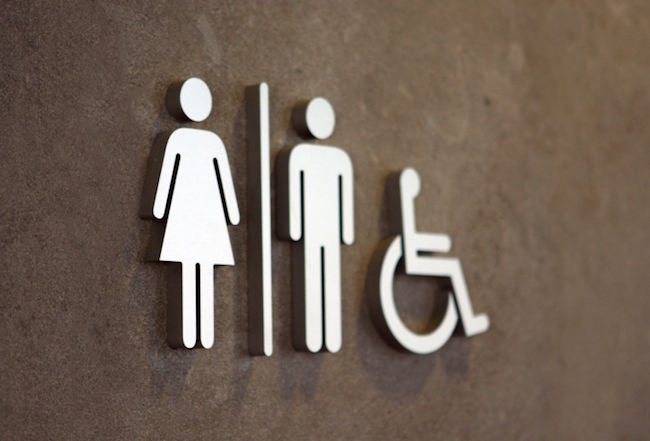21st century urbanites live in a world so convenient, it is easy to forget that humanity has strove for centuries – even millenniums – before the comforts of modern facilities are readily available.
I am not talking about that newfangled designer car or the latest gadget advertised on the online tech stores, drool-worthy as they are. I am talking about inventions that answer humanity’s most basic survival needs and thus qualify as life-saving.
And there is nothing more basic than the hygiene requirements when dealing with our bodily waste. Make a face all you want but that confection of a working bowel has to be dealt with somehow! Certainly, the toilet with a one-button flush and porcelain throne makes it to the List of Top Five Things To Miss when getting in touch with nature in the outback.

Yet, how appreciative are we about our toilet? Are we even aware of its grand history which is old as the birth of civilisation?
Since excrement hardly adds decorative value to permanent living quarters, the ancient settlers got around to allocating a fixed spot for its regular output. But do not expect the concept of relieving ourselves while sitting to strike humanity from the beginning.
The earliest discovered form of the toilet dates back to 5000 years ago, in the Orkney Islands off the north of Scotland. Hollows built along the walls of the prehistoric huts are presumed to serve as toilets, for they led to drains that could dispose waste into the underground.

Around the same time, the ancient Sumerians were using cesspits dug in a room of their houses. Nothing complicated; just a really deep hole in the ground that one would squat over. As for the Egyptians, they were satisfied with a seat over a pile of sand in a box.
The genius of using water to carry waste away is currently attributed to the Minoans, who occupied Cretes from 27th to 15th century BC. Archaeologists found a flush toilet in the queen’s quarters of an ancient palace built 3000 years ago. Poured water would move the waste from the pan into the drain.

Thus, we come to the topic of the sewerage as the next step of sanitation evolution. The Harrapans of the 2600 BC Indus Valley civilization nailed it on a city-wide scale with a system of house-to-house open gutters and sewers that dropped waste into a communal cesspit. Running water would carry the collected load into the nearest natural body of water.
The technology of human waste disposal advanced. Sanitation engineering of the Roman Empire was so well-crafted its array of baths, public restrooms, aqueducts and sewerage was as famous as its military accomplishments.
Unfortunately, availability of hygiene facilities did not equate to personal hygiene conviction. Dumping contents of the chamber pots out through the window persisted as a pretty easy way of clearing space. This was what the Western societies afterwards were left with, especially when Roman sanitation technology died with its empire.

Basically, latrines, cesspits and chamber pots were the order of the day for peoples of both the Western and Eastern hemisphere. The shovelling away of unwanted ornaments from the streets was designated to the public cleaners and the mercy of rainwater. Rivers maintained their service as the ultimate dumping ground, on top of being the water supplier, mind you. Enlightenment had yet to arrive.
For subsequent centuries throughout the world, sanitation development made no great stride. Though the device of the flush toilet with an overhead water tank was invented in 1596 – just for Queen Elizabeth I by Sir John Harington – it took somewhere around two hundred years before this groundbreaking invention could be found in homes of Europe. Those who could afford it, that was.
In the meantime, communal filth contributed to epidemic outbreaks across the West.
There were later improvements made to the flush toilet, thanks to the innovators of Great Britain. In 1775, Alexander Cummings introduced the S-valve. It helped retain water in the pipe in order to block returning odours. In 1852, the George Jennings increased the pressure of flushing water for better cleaning effect. The porcelain toilet bowl was created in 1884 by Thomas Twyford. And in 1885, Thomas Crapper produced the automatically-refillable water tank.

However, widespread installation of the up-to-date flush toilet was not possible without the enjoining sewerage. So the fight to keep the streets clean and smelling clean continued throughout the 1800’s, as the necessary civil construction was incorporated into the urban development of major European cities and the United States. Only in the 1920’s – barely a century ago – that flushing toilets and modern sewerage were readily accepted as the norm in America.
Nonetheless, similar sanitation provision for the rural areas was a question mark. It accompanied the issue of wealth disparity as well, and still does. Also, advancement of sanitation technology varied across different nations. In Japan for instance, the widespread use of the modern flush toilet and sewerage works did not began in earnest till after World War II.
It is contemporary today to measure the investment into sanitation infrastructure as a mark of a society’s sophistication. That is why toilets at the airport are immaculate and the glitzier the hotel, the swankier the loos. In fact, toilet designs are getting fancier. Thrones equipped with the ability to wash the user’s bottom are old news by now.

This toilets talk is not only a matter of technological or economic advancement. It is about the achievement of civilization: that in mindset and behaviour, humankind could comprehend and acquire the rights to personal and communal hygiene and health.
Yet, a United Nations study in 2013 found that more people have cellphones than access to a proper toilet. And the statistics of the World Toilet Organisation revealed that 15% of the world population today still practices open defecation; that unsafe water and poor sanitation are causing around 700,000 children to die from diarrhoea every year.
Perhaps our priorities could do with some re-working.
Given the indisputable necessity of toilets, they make a perfectly pragmatic subject for discussion, awareness and education. And hopefully by extension, our respect and acknowledgement will increase for jobs related to the making and maintenance of them.
Also read: Singapore’s NTU has a toilet that will turn your poo into energy and fertilizer













